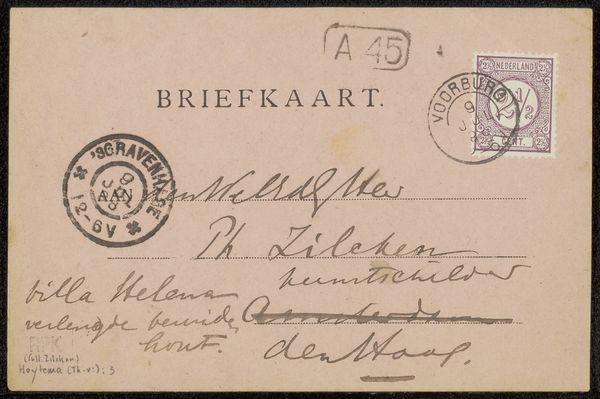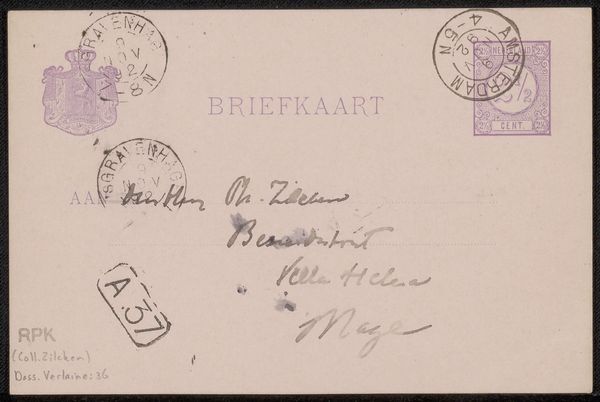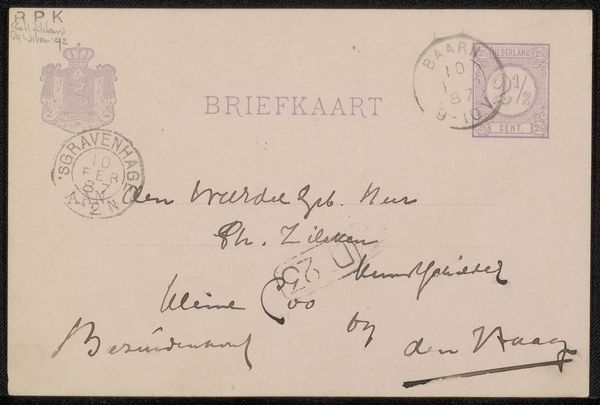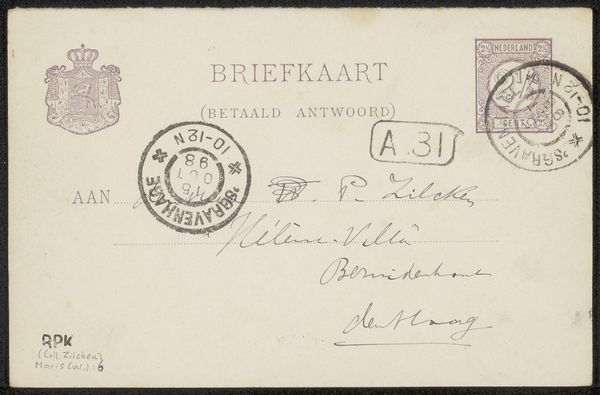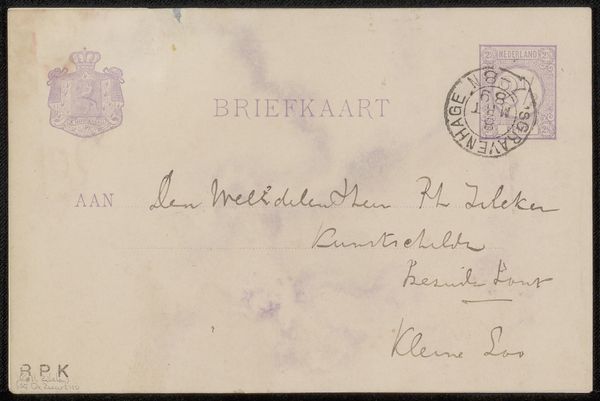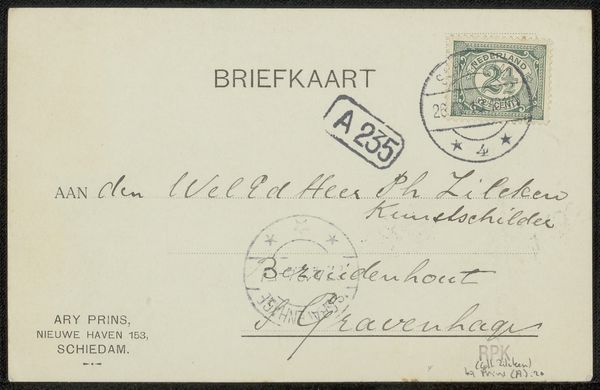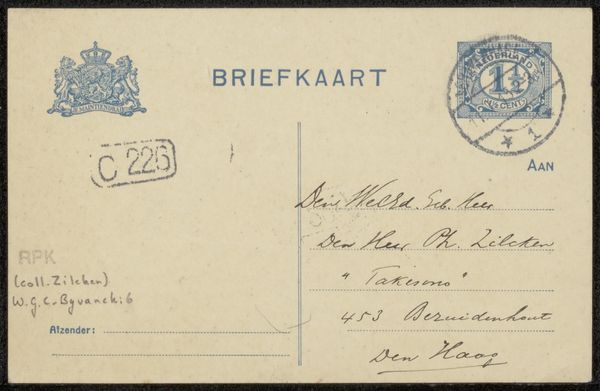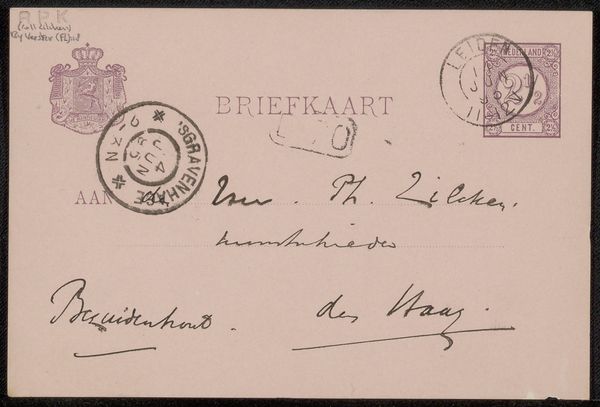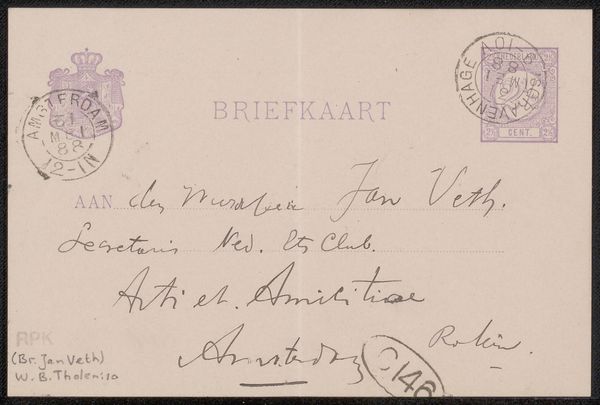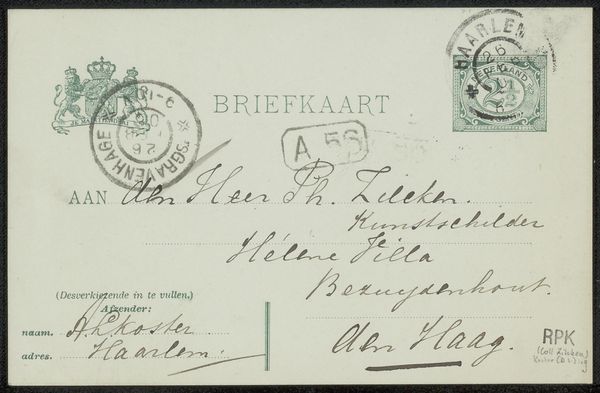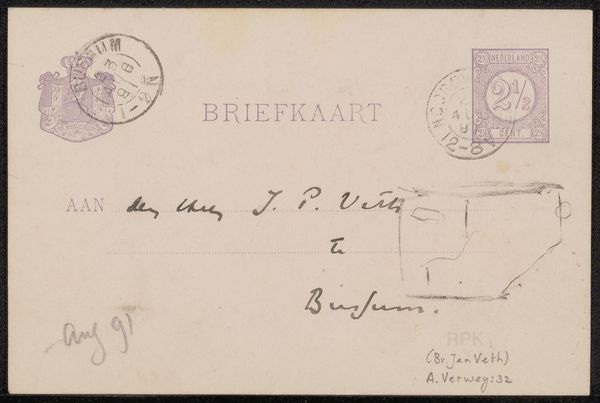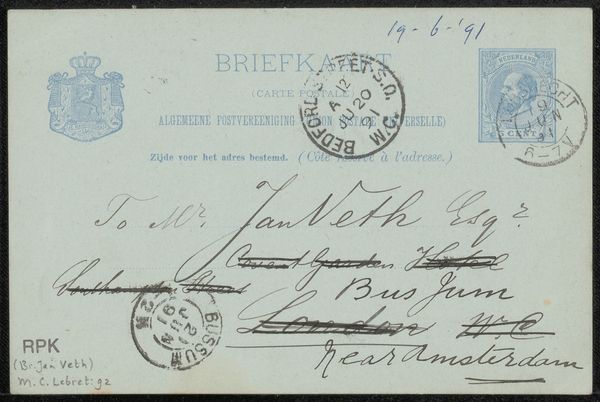
drawing, paper, ink, pen
#
portrait
#
drawing
#
dutch-golden-age
#
pen sketch
#
paper
#
ink
#
sketchwork
#
ink drawing experimentation
#
pen
Copyright: Rijks Museum: Open Domain
Editor: This is "Briefkaart aan Jan Veth," a postcard to Jan Veth, created before 1892 by Albert Verwey, made with pen and ink on paper. It's just text and handwriting, almost like a found object rather than high art. What jumps out at you when you see this? Curator: What interests me is how the mundane – the simple act of correspondence – becomes art. The materiality speaks volumes: the type of paper used, the ink, even the postal stamp. Consider the social context. Who was Jan Veth to Verwey? How did this correspondence function within their artistic circles? What means of delivery existed, and who did this benefit? These questions reposition the postcard, not as an intimate message but as a commodity circulated within a specific network. Editor: I see what you mean. It's not just about the message itself, but the entire system of how it was sent and received. Is there a statement about artistic practice implied here? Curator: Precisely. By using a pre-fabricated form – the postcard – Verwey acknowledges and then subtly subverts the industrial processes of communication. The handwritten element then becomes a personal intervention, an assertion of artistic labor against mass production. Notice too the function of writing. Calligraphy as drawing… it straddles categories and resists clear definitions of art versus craft. Editor: That’s a great point. So, thinking about materiality and labor, this postcard documents the merging of everyday life with the artistic process. Curator: Exactly! It's about understanding art not just as aesthetic objects, but also through the means of their production and consumption within a specific socio-economic context. Editor: That gives me a completely different way of thinking about this piece. It’s more than just a quick note; it's a glimpse into a whole network of materials, labor, and relationships. Thanks for pointing that out. Curator: My pleasure. It is important for one to realize that materiality goes beyond pretty and extends towards revealing the economic underpinnings that dictate creation and aesthetic appreciation.
Comments
No comments
Be the first to comment and join the conversation on the ultimate creative platform.
